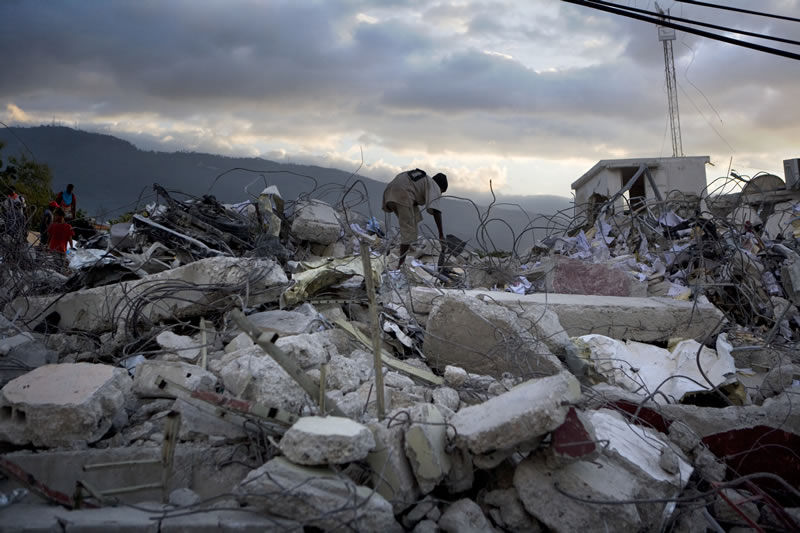Death by Design
- Natalie Nicholson
- Feb 19, 2022
- 2 min read
In a number of natural disasters, hospitals failed to operate or operate fully because they were in low lying areas.

photo: NOAA/NGDC, Talia Frenkel, American Red Cross
Death by design
"When disaster strikes and people are injured, hospitals are the first place people go. Therefore, they must be the last thing standing and operating."
Have you ever heard the expression “Nothing is certain, but death and taxes”?
Well now, it’s pretty evident that "Death by design" is a certain thing too – especially when it comes to the overall planning and design of hospitals and healthcare facilities. It seems that nothing puts a hospital's design and infrastructure to the test quite like a natural disaster.
Port-au-Prince, 2010
One of the more horrific examples of this was when a catastrophic earthquake hit Haiti near the capital city of Port-au-Prince back in early 2010. The hospital in Pétionville (a district of Port-au-Prince) crumbled. Even when the earthquake stopped, the death toll continued to climb. People had no access to the healthcare they needed. According to a report, an estimated 220,000 people died and more than 300,000 were wounded. This overwhelming loss of life had a devastating impact on the overall function of healthcare facilities, government and basic utilities in Haiti.
Lacking critical infrastructure
In a number of natural disaster examples, hospitals failed to operate (or operate fully) because they were in low lying areas. In some cases, critical infrastructure like generators and electrical switchboards were on basement levels that flooded. Precious medical and surgical stores in these areas were lost. Some lost clean water supply or air conditioning. One of the biggest problems that arose in the aftermath of the Haiti earthquake was the spread of infectious diseases, due to many wounds being treated in poor sanitary environments.
Some hospitals, post-disaster, were overwhelmed from the large influx of people requiring assistance and medical treatment, while others had to be cut-off completely, literally inaccessible to people when they desperately needed it most. The sad truth is that many hospitals do not plan for such events, even though these events are more likely than we would like to believe. In the wake of these natural disasters, hospitals will now need to pay insurmountable amounts in damage and loss of expensive equipment that could have been prevented. For the billions and billions we spend, we can do better.
It takes an experienced eye and qualified mind to consider the broad range of issues and circumstances that could arise if disaster strikes. But let's say it does take 100 years for the next earthquake of a century to return – there are still a number of issues that have to be raised and considered when building or remodeling medical facilities to withstand day-to-day operations.
Proper medical design and planning can maximize operating efficiency, and will save time, lives and money, thus providing a win-win scenario for everyone. Our Micro-Hospital model covers all bases from disaster planning to critical systems analysis. Our medical equipment has been selected and will be installed to the highest standards with survivability in mind.



Comments